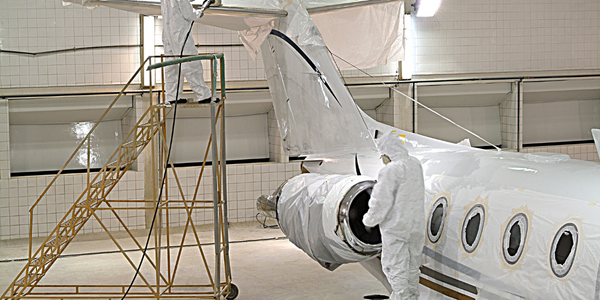Customer Company Size
Large Corporate
Region
- America
Country
- Canada
Product
- HPE GreenLake for storage
- HPE GreenLake for compute
- HPE GreenLake Management Services
- HPE Pointnext Complete Care
- HPE Alletra
- HPE Primera
- HPE StoreOnce
- HPE Synergy
- HPE SimpliVity
- HPE InfoSight
Tech Stack
- Cloud services
- Data management
- Infrastructure automation
- Data backup
- High availability storage
Implementation Scale
- Enterprise-wide Deployment
Impact Metrics
- Cost Savings
- Productivity Improvements
- Revenue Growth
- Customer Satisfaction
- Digital Expertise
Technology Category
- Infrastructure as a Service (IaaS) - Cloud Computing
- Infrastructure as a Service (IaaS) - Cloud Storage Services
- Infrastructure as a Service (IaaS) - Private Cloud
- Application Infrastructure & Middleware - Data Exchange & Integration
- Application Infrastructure & Middleware - Database Management & Storage
Applicable Functions
- Business Operation
- Sales & Marketing
Use Cases
- Cybersecurity
- Edge Computing & Edge Intelligence
- Inventory Management
- Predictive Maintenance
Services
- Cloud Planning, Design & Implementation Services
- Data Science Services
- System Integration
- Testing & Certification
- Training
About The Customer
The Western Canada Lottery Corporation (WCLC) is a non-profit organization that operates lottery and gaming activities on behalf of the provinces of Alberta, Saskatchewan, and Manitoba, as well as the Yukon, Nunavut, and Northwest Territories. The organization's mission is to deliver increased revenue back to governments, which requires efficient budget planning and insights to understand players and optimize sales. WCLC is looking at data insights to expand and enhance player engagement, attract new markets, and respond to user demands. The COVID-19 pandemic accelerated the expansion of digital channels, leading to the launch of a new online subscription service.
The Challenge
Western Canada Lottery Corporation (WCLC) operates lottery and gaming activities on behalf of several provinces and territories in Canada. The non-profit organization's mission is to deliver increased revenue back to governments, which requires efficient budget planning and insights to understand players and optimize sales. However, WCLC's legacy stack was not ideal for gaming operations. Infrastructure had grown along with business needs through siloed purchases, leading to lifecycle management issues, where parts of the environment were off support or nearly there. To meet growing customer expectations, the organization needed to increase its systems' performance.
The Solution
WCLC adopted a consumption-based platform, driving costs down to give more money back to fund services that benefit local populations. The organization and its partner Powerland found a solution to transform beyond the data center: the HPE GreenLake edge-to-cloud platform, which accelerates and simplifies the way WCLC acquires, plans, and expands IT to support its business. With the HPE GreenLake platform, WCLC gets compute and storage as cloud services-fully deployed on-premises. The HPE GreenLake platform at WCLC also includes HPE Synergy, which accelerated application performance up to 3x compared to the previous system; HPE InfoSight with AI-driven infrastructure automation prevents potential issues or downtime; HPE StoreOnce for data backup; HPE SimpliVity running security and network tools to ensure high availability; and HPE Primera storage, which delivers 100% uptime guarantee.
Operational Impact
Quantitative Benefit

Case Study missing?
Start adding your own!
Register with your work email and create a new case study profile for your business.
Related Case Studies.

Case Study
Remote Monitoring & Predictive Maintenance App for a Solar Energy System
The maintenance & tracking of various modules was an overhead for the customer due to the huge labor costs involved. Being an advanced solar solutions provider, they wanted to ensure early detection of issues and provide the best-in-class customer experience. Hence they wanted to automate the whole process.

Case Study
Predictive Maintenance for Industrial Chillers
For global leaders in the industrial chiller manufacturing, reliability of the entire production process is of the utmost importance. Chillers are refrigeration systems that produce ice water to provide cooling for a process or industrial application. One of those leaders sought a way to respond to asset performance issues, even before they occur. The intelligence to guarantee maximum reliability of cooling devices is embedded (pre-alarming). A pre-alarming phase means that the cooling device still works, but symptoms may appear, telling manufacturers that a failure is likely to occur in the near future. Chillers who are not internet connected at that moment, provide little insight in this pre-alarming phase.

Case Study
Aircraft Predictive Maintenance and Workflow Optimization
First, aircraft manufacturer have trouble monitoring the health of aircraft systems with health prognostics and deliver predictive maintenance insights. Second, aircraft manufacturer wants a solution that can provide an in-context advisory and align job assignments to match technician experience and expertise.

Case Study
Integral Plant Maintenance
Mercedes-Benz and his partner GAZ chose Siemens to be its maintenance partner at a new engine plant in Yaroslavl, Russia. The new plant offers a capacity to manufacture diesel engines for the Russian market, for locally produced Sprinter Classic. In addition to engines for the local market, the Yaroslavl plant will also produce spare parts. Mercedes-Benz Russia and his partner needed a service partner in order to ensure the operation of these lines in a maintenance partnership arrangement. The challenges included coordinating the entire maintenance management operation, in particular inspections, corrective and predictive maintenance activities, and the optimizing spare parts management. Siemens developed a customized maintenance solution that includes all electronic and mechanical maintenance activities (Integral Plant Maintenance).

Case Study
Hospital Inventory Management
The hospital supply chain team is responsible for ensuring that the right medical supplies are readily available to clinicians when and where needed, and to do so in the most efficient manner possible. However, many of the systems and processes in use at the cancer center for supply chain management were not best suited to support these goals. Barcoding technology, a commonly used method for inventory management of medical supplies, is labor intensive, time consuming, does not provide real-time visibility into inventory levels and can be prone to error. Consequently, the lack of accurate and real-time visibility into inventory levels across multiple supply rooms in multiple hospital facilities creates additional inefficiency in the system causing over-ordering, hoarding, and wasted supplies. Other sources of waste and cost were also identified as candidates for improvement. Existing systems and processes did not provide adequate security for high-cost inventory within the hospital, which was another driver of cost. A lack of visibility into expiration dates for supplies resulted in supplies being wasted due to past expiry dates. Storage of supplies was also a key consideration given the location of the cancer center’s facilities in a dense urban setting, where space is always at a premium. In order to address the challenges outlined above, the hospital sought a solution that would provide real-time inventory information with high levels of accuracy, reduce the level of manual effort required and enable data driven decision making to ensure that the right supplies were readily available to clinicians in the right location at the right time.




---nyse--hpe_1.jpg)



